de Castro J, and de Castro M. 2019. Mad buffalo. Biodiversity Observations 10.6:1-9
Biodiversity Observations is an open access electronic journal published by the Animal Demography Unit at the University of Cape Town. This HTML version of this manuscript is hosted by the Biodiversity and Development Institute. Further details for this manuscript can be found at the journal page, and the manuscript page, along with the original PDF.
Mad buffalo
Julio de Castro
Harare, ZimbabweMabel de Castro
Harare, ZimbabweWe were on a game drive following the Shingwedzi River towards the Kanniedood Dam in the Kruger National Park on 5 October 2017. About four km after leaving the Shingwedzi Rest Camp we spotted a group of lions feeding on a greater kudu that appeared to have been killed earlier that morning (Figure 1). It was 08h30.

There were ten lions: two adult males, one young male, and seven adult females. They were feeding on the opposite bank of the river. Although the latter was open sand banks with scattered bushes, our visibility was rather limited by the dense vegetation on our side. After a while we managed to find a gap in the vegetation that enabled us to watch them.
At exactly 08h45 (we know the exact times because of the photo timestamps) four lionesses were feeding on the kill while the remaining members of the pride were nearby, either a few metres away or up on the river bank. We also noted that there were three adult buffalo about 50 metres towards the right of the lions. They were not grazing, just watching them.
Suddenly, one of the buffalo ran the distance that separated it from the lions at speed and charged the group, scattering them in all directions (Figure 2). Then the buffalo started to head-butt the greater kudu carcass.
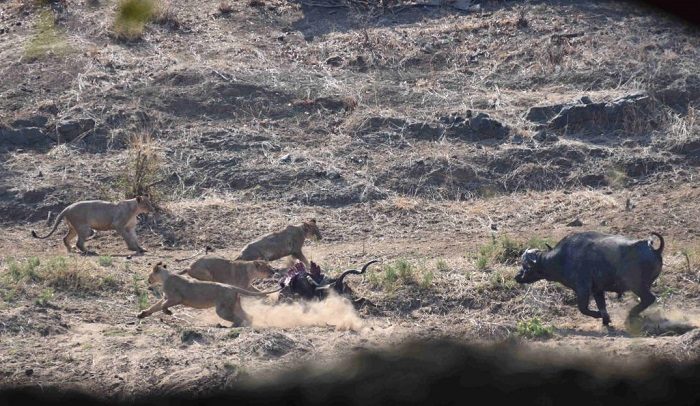
The buffalo thrashed the carcass for a few seconds. During this time, the lions dispersed a short distance and then stopped and watched the buffalo (Figures 3 – 5).


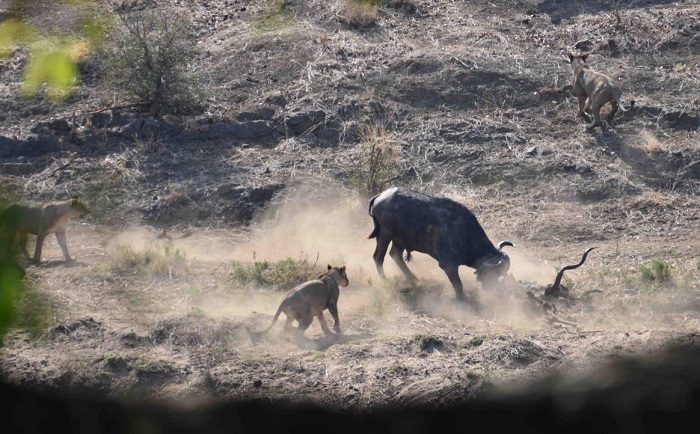
Then, the other two buffalo came and the trio stood at the site for a while before moving off to the other side of the carcass at a distance of about 30 metres (Figures 6 and 7).

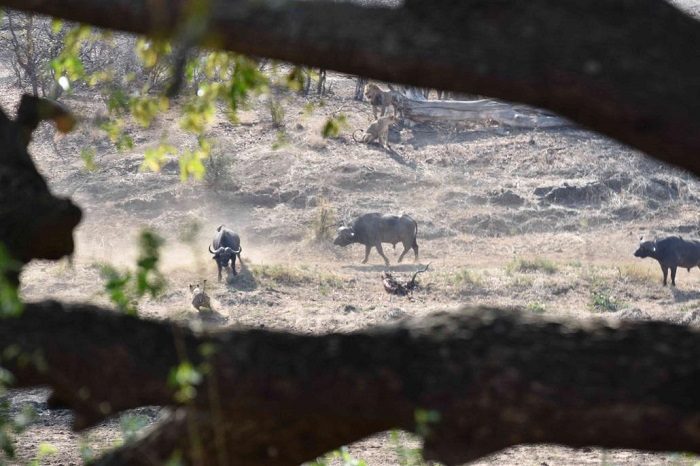
Two minutes later the lions started to come back and resumed feeding, still being watched by the buffalo. Several lion came to feed and left, including the males. After thirty minutes, six lionesses were feeding at the kill (Figure 8) when a second buffalo charge took place (Figures 9 and 10).


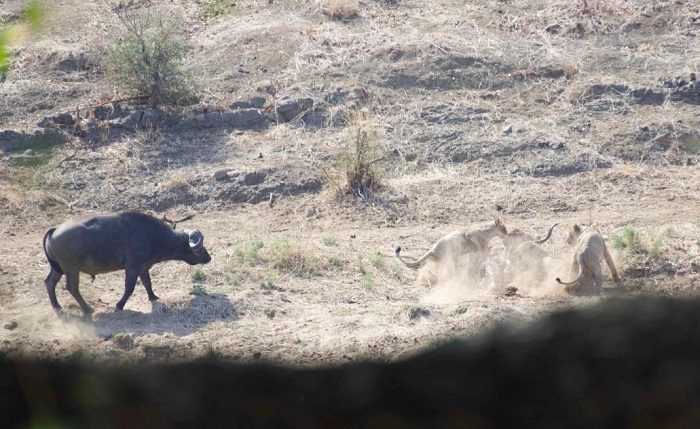
This time the buffalo only displaced the lions and it did not interfere with the carcass (Figure 11).

After this second interaction the three buffalo turned their attention towards the lions that were now away from the carcass and proceeded to flush them out from the locations the lions chose as cover (Figure 12).
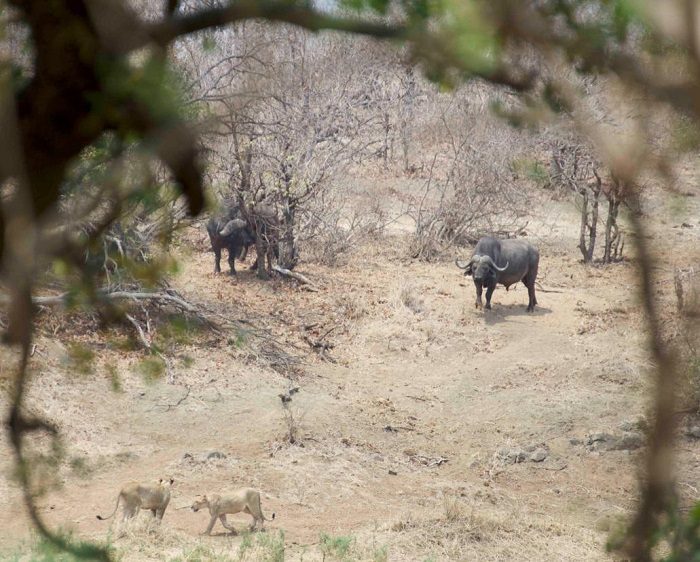
After about one hour of this confrontation, one of the lionesses moved off and walked about 200m towards a pool in the river and, after drinking, took cover under some bushes.
By about 11h00 the standoff was over and the buffalo moved away leaving the lions undisturbed either singly or in small groups at various places along the river. When we returned before sunset, a group of lions was resting on the riverbed but the buffalo were no longer in the area. By the following morning there were no signs of the lions or the carcass but some buffalo were still in the area.
We believe that there are three issues of interest. The first is that at no time the lions attempted to face or retaliate against the buffalo despite the size of the pride. This is probably explained either by not being hungry (as they had fed on the grater kudu) and/or being aware that the strong buffalo were a dangerous prey.
The second issue is the clear and understandable adverse reaction of the buffalo against the lions that they perceive as a danger and did not wish to have in their territory.
The third issue relates to the buffalo behaviour towards the carcass. It is possible that, unable to retaliate against the lions, the buffalo’s anger was expressed against what they saw as associated with the predators. Of course we cannot rule out that some other reason sight- or smell-related, triggered this conduct.
Perhaps readers with more experience on animal behaviour would like to comment on this and put forward a better explanation?




